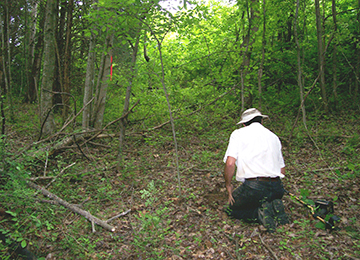The Phase I Environmental Site Assessment (ESA) is the industry standard for conducting environmental due diligence on a property being considered for purchase. The Phase I follows a systematic approach to researching the past use of a property, which allows an Environmental Professional to provide an opinion concerning whether the release of contaminants may have occurred on the property. This is important: the Phase I only evaluates the potential for whether contamination may be present, not whether contamination is actually present.
If the potential is considered high, then a Phase II ESA may be recommended. A Phase II involves the collection of soil, groundwater, or soil gas samples on the property in an attempt to identify contamination. The decision to progress to a Phase II should be discussed between the property buyer and the Environmental Professional, as it all depends on the situation and the risk tolerance of the buyer. For example, if the buyer intends to purchase a property to construct a day care center, the risk profile is significantly different than one where a buyer is building a manufacturing facility. The recommendation to conduct a Phase II ESA would likely be higher in the day care center example given the proposed use and sensitive population expected to occupy the property. Discussions like this should always occur to ensure informed decisions can be made.
The Phase I ESA also can provide liability protections to buyers in certain circumstances. Conducting this due diligence can allow property buyers to claim innocent purchaser defenses if contamination is or may be present. It essentially allows a buyer to identify certain conditions before becoming the landowner, thus documenting they did not cause or contribute to that condition, and shifting some liability to another party. In this regard, the Phase I can be a great risk management tool in commercial real estate due diligence.
A more direct benefit can also be realized by conducting a Phase I ESA. During the ESA process, a site visit to evaluate existing conditions is required. Often times, the Environmental Professional (EP) is able to identify conditions that would have a material and financial impact on the proposed project. For example, the EP may identify suspect asbestos containing materials throughout the building which, although technically excluded from the scope of a Phase I ESA, can alert a buyer to potential asbestos abatement costs down the line and allow for those costs to be figured into the project budget. Similarly, environmental conditions identified during the Phase I ESA can be used as a negotiating tool in determining the purchase price of a property. Buyers can say the environmental condition will cost X dollars to correct; therefore, that amount should be deducted from the purchase price.
In summary, Phase I ESAs are often a lender requirement as part of most commercial real estate transactions, but should not necessarily be viewed simply as such. Instead, Phase I ESAs can provide real, actionable information to property buyers that can significantly help manage risk and anticipate project cost items as part of future proposed land use. It is extremely important to have open discussions with the Environmental Professional conducting the Phase I, so that they know what risk tolerances are of concern and can frame the recommendations accordingly.

